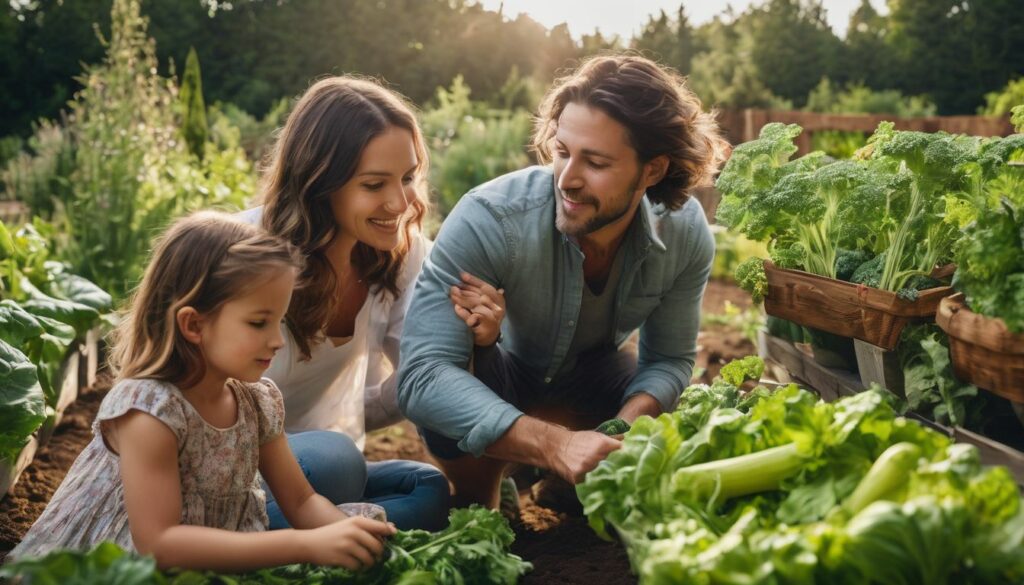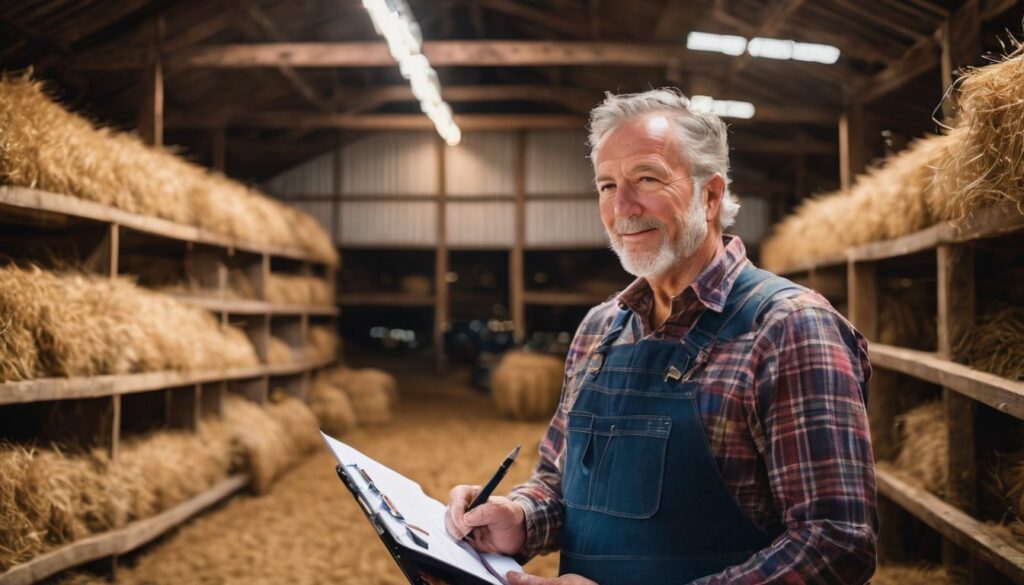Ever caught yourself daydreaming about the charm of your very own homesteader kitchen? You’re certainly not alone. In fact, even while nestled snugly in an urban apartment, I found ways to artfully weave together the rustic allure of traditional storage methods with the slick efficiency of modern amenities within my cosy space.
Throughout this blog post, you’ll uncover handy tips on how to craft a functional homesteading kitchen that perfectly marries timeless appeal and convenient practicality. So are you ready for an exciting culinary escapade? Keep reading!
Key Takeaways
- A homesteader’s kitchen combines traditional storage methods with modern amenities for a functional and efficient space.
- Maximizing counter space and utilizing smart storage solutions are crucial for keeping tools and ingredients organized in the kitchen.
- Essential tools for a homesteader’s kitchen include durable pots and pans, multi-functional appliances like dehydrators and freeze dryers, and canning supplies for preserving homegrown produce.
- When designing a homesteader’s kitchen, consider the layout, purpose of the space, and incorporate space-saving solutions like multi-tasking islands and ventilated drawers.
The Importance of a Functional Kitchen for a Homesteader
A good kitchen matters to a homesteader. It lets them cook, store food, and keep everything neat. Homesteaders always need clean water and lumber close by too. With these things, they can build more if they need to.
Having the right tools in the kitchen is critical for homestead life. A wooden bench helps with pie crusts and it splits them into equal parts. More shelves or drawers let you pack away more stuff in a small room.
This makes your kitchen work well even when it’s small.
Homesteading means cooking from scratch most often. So, having modern amenities blended with traditional items becomes helpful here. This mix aids in making comfort food or lunch using homegrown produce while keeping old cooking methods alive!
It’s not just about the rural folks though; city dwellers can learn something too! Even living in an apartment doesn’t mean you can’t be like a homesteader – bake some bread at home or try your hand at fermenting sauerkraut maybe? Being self-sufficient is truly rewarding no matter where you live!
Traditional Storage vs Modern Amenities
In creating a homesteader’s kitchen, it is important to strike a balance between traditional storage methods and modern amenities. By combining these elements, you can achieve an efficient and functional space that meets the needs of a homesteading lifestyle.
Additionally, maximizing counter space and storage options is crucial for keeping all your tools and ingredients organized and easily accessible.
Combining traditional and modern elements for a streamlined kitchen
When creating a homesteader’s kitchen, it is important to combine traditional storage and food preparation areas with modern amenities. This allows for a streamlined and efficient cooking experience.
By maximizing counter space and utilizing smart storage solutions like extra shelves and drawers, you can have everything you need within reach while maintaining an organized space.
Incorporating both traditional elements like salvaged pantry doors and farmhouse sinks, as well as modern features like granite countertops and multi-functional appliances, creates a balance between rustic charm and contemporary functionality in your kitchen.
Maximizing counter space and storage
In my homesteader’s kitchen, maximizing counter space and storage is essential. I want to make sure I have enough room to work and keep all of my supplies organized. To achieve this, I use space-saving solutions like hanging pots and pans on a rack above the stove.
This not only frees up cabinet space but also makes them easily accessible while cooking. Additionally, I utilize stackable containers for storing grains, beans, and other dry goods to maximize vertical storage.
By keeping everything neat and tidy, I can efficiently prepare meals from scratch without feeling overwhelmed by clutter.
Essential Tools for a Homesteader’s Kitchen
When it comes to a homesteader’s kitchen, having the right tools is essential for cooking from scratch and preserving homegrown produce.
Pots and pans for cooking from scratch
In my homesteader’s kitchen, having the right pots and pans is essential for cooking from scratch. I opt for durable stainless steel or cast iron cookware that can handle high temperatures and retain heat evenly.
These types of pots and pans are perfect for simmering homemade soups, braising meats, and searing vegetables. I also make sure to have a variety of sizes to accommodate different recipes.
From large stockpots for making bone broth to smaller saucepans for melting butter or heating sauces, having a well-stocked collection makes cooking easier and more enjoyable. Additionally, investing in non-stick frying pans is great for quick meals like pancakes or omelets – just remember to use utensils that won’t scratch the surface!
Multi-functional appliances such as a dehydrator and freeze dryer
In my homesteader’s kitchen, I find multi-functional appliances like a dehydrator and freeze dryer to be absolutely essential. These appliances help me preserve the bounty of my homegrown produce for longer periods.
With a dehydrator, I can easily dry fruits, vegetables, and herbs to create flavorful snacks or add them to meals later on. Meanwhile, a freeze dryer allows me to extend the shelf life of meats, leftovers, and even dairy products without compromising their taste or quality.
Having these versatile appliances in my kitchen helps me make the most out of my harvest and reduce food waste— all while enjoying delicious and nutritious meals throughout the year.
Canning supplies for preserving homegrown produce
Preserving homegrown produce is an important part of homesteading, and having the right canning supplies makes it easier. Mason jars are a must-have for storing fruits, vegetables, and even homemade jams and pickles.
You’ll also need lids and rings to seal the jars properly. Invest in a good canner or pressure cooker for safely processing your canned goods. Other useful tools include a jar lifter for removing hot jars from boiling water, a funnel for filling jars with liquids, and a bubble remover to release air bubbles before sealing.
With these supplies on hand, you can enjoy your own delicious preserved foods all year round!
Designing a Homesteader’s Kitchen
Consider the layout and purpose of your kitchen, incorporating space-saving solutions like a multi-tasking island and ventilated drawers. Ready to create your dream homesteader’s kitchen? Keep reading!
Considering the layout and purpose of the kitchen
When designing a homesteader’s kitchen, it is important to carefully consider both the layout and purpose of the space. The layout should be efficient and functional, allowing for easy movement and access to essential items.
This may involve incorporating space-saving solutions like a multi-tasking island or ventilated drawers for storing produce. Additionally, the purpose of the kitchen should align with the homesteading lifestyle, focusing on scratch cooking and food preservation.
By planning a kitchen that meets these needs, you can create a space that supports your self-sufficiency goals and makes everyday tasks more enjoyable.
Incorporating space-saving solutions like a multi-tasking island and ventilated drawers
When designing a homesteader’s kitchen, it’s important to maximize space and storage. One way to achieve this is by incorporating space-saving solutions like a multi-tasking island and ventilated drawers.
A multi-tasking island provides additional countertop surface for food preparation, while also serving as extra storage with built-in shelves or drawers. Ventilated drawers are great for storing produce and pantry items, as they allow air circulation to keep food fresh longer.
These space-saving solutions help create an efficient and functional kitchen that meets the needs of a homesteader while making the most of available space.
Bringing Together Farmhouse Flair and Modern Functionality
Incorporate salvaged pantry doors and farmhouse sinks for a rustic touch, or opt for granite and marble countertops for durability and aesthetics. Discover how to seamlessly combine farmhouse flair with modern functionality in your homesteader’s kitchen!
Using salvaged pantry doors and farmhouse sinks for a rustic touch
I love incorporating salvaged pantry doors and farmhouse sinks in my homesteader’s kitchen for a rustic touch. Not only do they add character and charm to the space, but they also fit perfectly with the traditional storage and modern amenities theme.
By repurposing old doors or finding vintage ones, I can create unique pantry doors that give my kitchen a one-of-a-kind look. Farmhouse sinks not only have a classic appeal but are also practical for washing large pots and produce from my garden.
These elements bring together the vintage feel of a traditional homestead with the functionality of a modern kitchen.
Incorporating granite and marble countertops for durability and aesthetics
When designing a homesteader’s kitchen, it is important to choose countertops that are both durable and aesthetically pleasing. Granite and marble countertops are excellent choices for this purpose.
Not only do they add a touch of elegance to the kitchen, but they also offer durability that can withstand the demands of everyday use. Granite countertops are known for their resistance to scratches and heat, making them perfect for food preparation areas.
Marble countertops, on the other hand, have a classic beauty that adds charm to any kitchen. By incorporating granite and marble countertops into your homesteader’s kitchen design, you can enjoy both functionality and style in one attractive package.
Conclusion
In conclusion, creating a homesteader’s kitchen that combines traditional storage and modern amenities is all about finding the right balance. By maximizing counter space and storage, investing in essential tools like pots and pans, and designing a functional layout, you can create a kitchen that allows for efficient cooking from scratch.
With the perfect blend of farmhouse flair and modern functionality, you’ll be well-equipped to embrace the homesteading lifestyle while enjoying the comforts of a modern kitchen. So go ahead, start planning your own homesteader’s kitchen today!
FAQs
1. What is a homesteader’s kitchen?
A homesteader’s kitchen pairs traditional storage methods, food preservation techniques with modern amenities for self-sufficiency in the kitchen.
2. How do I create a functional design for my homestead kitchen?
In creating your functional kitchen design, consider using vintage appliances, DIY food storage solutions and prep areas that make use of seasonal produce.
3. What are some key elements of a traditional cooking style in a homestead kitchen?
Traditional cooking methods like farm-to-table cooking and heritage techniques are important in a rustic decor setting such as the Homestead Kitchen.
4. Are there specific tools useful in the homesteader’s kitchen?
Yes! Important tools include those needed for food storage, different types of cooking tools tied to sustainable living practices and those used in the preparation of meals, including brunch!
5. Can this style find relevance beyond rural areas – Texas Hospitality as an example?
Absolutely! A Homesteader’s Kitchen embraces functional design and traditional cooking methods which can be adapted anywhere to provide warmth akin to Texas hospitality.





